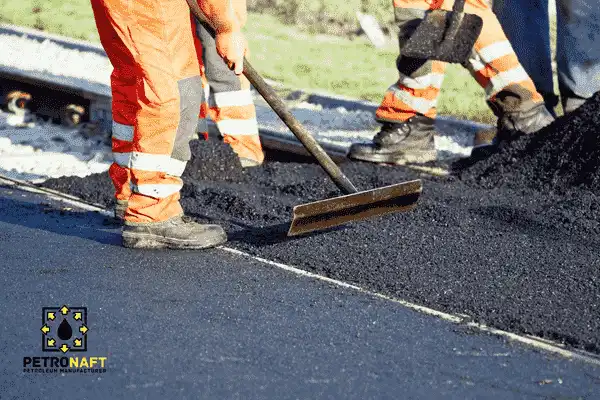How to Prevent Pavement Damage: A Comprehensive Guide
Preventing pavement damage is essential to prolong the lifespan of your surfaces. This article offers a detailed look into the factors that can cause deterioration and the methods to mitigate these risks, ensuring that your pavement remains intact and functional for an extended period.
What is pavement damage and how to avoid it?
The most significant kinds of asphalt road pavement degradation include cracks, holes, settlements, etc., which lead to its ultimate failure. Multiple breakdowns may occur concurrently on the surface of the pavement, resulting in extensive damage. Obviously, failure does not occur on all pavements, and its incidence may be influenced by a variety of situations and causes. The following is an examination of the most essential strategies for avoiding pavement deterioration.
To avoid shear failure and irreversible changes in the soil, it is necessary to lower the intensity of compressive loads on the soil by generating a layer of high-quality and resistant materials, such as asphalt made with Bitumen 60/70 and Gilsonite or Natural asphalt. The pavement must reduce the soil’s compressive stresses and support the incoming loads; hence, modern road pavements are constructed in many layers. Among the most essential objectives of road paving are the following:
- Implementation of layers resistant to stresses resulting from dynamic and static loads.
- Increasing resistance to bending, shearing, and sliding forces brought by loads and surface friction.
- Preventing unlawful road modifications.
- Resistance to diverse weather conditions and external forces.
- Developing a smooth, secure, and appropriate surface for the movement of vehicles and…
Types of pavement deterioration
As previously said, pavement damage may emerge in a variety of forms, and each of these forms can be caused by a variety of circumstances. However, in general, road pavement damage can be grouped into the four following categories:
1- Surface flaws, such as stone graining and chipping, polishing, bitumen, oxidation, etc.
2- Altering the surface’s contour, including sagging, settling, swelling, and corrugation.
3- Dimensional fissures that may be transverse, longitudinal, lizard skin, mosaic, and reflecting.
4- Asphalt granulation breaks apart and sand grains are separated, which mostly happens due to the use of inappropriate bitumen or too little bitumen, and it has low, medium and high intensity.

Solutions to prevent damage to pavements
Generally, identifying and addressing the sources of degradation is the most effective strategy to maintain road pavements and avoid their deterioration. Determining and analyzing the failure cause may be of great assistance in adopting the most suitable strategy for failure prevention, repair, and elimination. As previously stated, the level of pavement damage may be assessed on a scale from 1 to 10 based on mild, medium, and severe scales. The most effective methods for preventing pavement degradation include:
– Prevent moisture intrusion into pavement texture
Moisture infiltration is one of the most significant causes for the collapse of all kinds of pavements, and limiting water infiltration is the most essential component in safeguarding pavements, embankments, etc. To prevent this issue, the drainage operation must be performed in a regular and flawless manner. The buildup of water in the pavement layers and its saturation cause the surface layers to degrade and the bearing capacity of the pavement to diminish over time. The infiltration of water, particularly in cold seasons, into the pavement produces frost and swelling and damages it rapidly; thus, drainage is crucial to the construction and installation of pavements.
– Use of superior materials in pavement construction
Low-quality materials are a significant contributor to pavement deterioration on roads. To avoid the degradation of the pavement and extend its life, it is vital to utilize high-quality materials and choose the best sand and bitumen granulation available. Today, Bitumen 60/70 and Gilsonite are used combined to boost the strength and durability of asphalt, which has unique properties.
– Proper road infrastructure
When the road’s infrastructure is not fundamental and standard, it will not have enough tolerance and resistance to the traffic load and imported loads. For adequate infrastructure, it may be necessary to dig in certain areas and pour soil in others. Even though the asphalt itself is flawless, if the foundation is not properly laid, the asphalt will eventually be subject to different pressures, such as bursting, settling, etc.
In general, the infrastructure of roads should be level and solid, and plant and animal matter as well as dirt should not be used in their construction. In the substructure, 6 to 8 mm of the top surface should be filled with rough and dense gravel, and to enlarge and re-substrate the road, it is required to re-substrate with gravel for optimal drainage.
– Pay attention to the asphalt type
Today, many forms of asphalt are utilized to cover roads and walkways, and each of these asphalt varieties might have distinctive characteristics and capabilities. In general, asphalts are categorized into three categories: hot asphalts, cold asphalts, and protective asphalts, each of which has its own unique application requirements. In order to use any of these asphalts, it is important to consider weather conditions, the kind of road infrastructure, the type of machinery, etc.
Paying attention to the binding strength of pavement materials, the level of impact resistance, the level of polishing resistance, the level of wear resistance, etc. Utilizing elements such as Gilsonite powder in the manufacturing of asphalt strengthens the asphalt’s resilience to pressure, impact, moisture, etc., resulting in longer-lasting pavements.
The concluding portion
Various elements, such as humidity, pressure, temperature fluctuations, loads, soil tensions, etc., may contribute to the degradation and ultimate failure of road pavement. Therefore, it is vital to avoid these issues from several elements, such as the road drainage system. The kind of substructure, the sort of materials used, etc., must be considered. As a result, mineral bitumen powder and natural bitumen are mostly utilized in the manufacturing of asphalt due to their unique properties, such as high compressive strength, low moisture penetration, and outstanding durability, among others.
Purchasing from Petro Naft
For more detailed information and to purchase the product discussed in this article, please visit the dedicated product page below. Alternatively, use the various communication channels provided on our site to register your purchase inquiry or take advantage of our expert guidance.
Prepared by the PetroNaft Co. research team.



